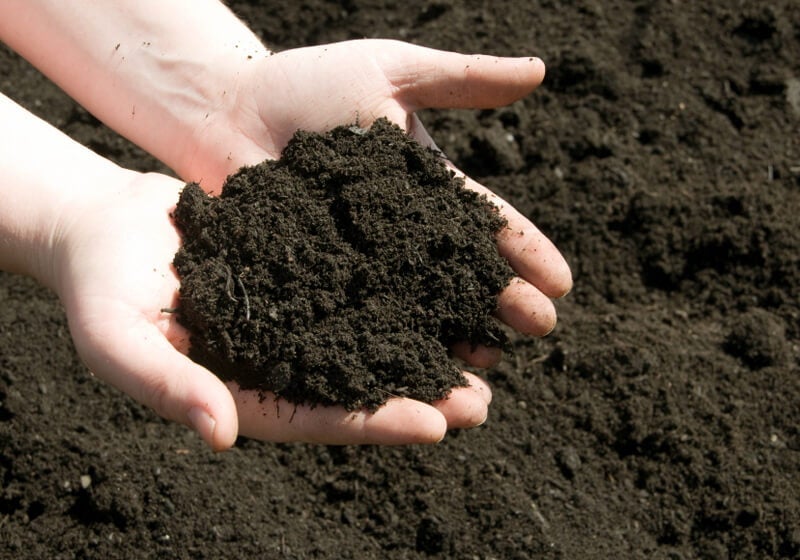Vegetables need good soil. If the soil is hard, rocky, soggy, or nutrient-poor, the vegetables will be, too. In rich, soft soil, roots grow deeply and soak up nutrients for healthy, productive plants. Here is how to prepare the spot where your veggies will grow.
Clear the area.
Remove grass, rocks, or other debris. To dig up grass, use a spade to cut the sod into small squares and pry from the planting area with the end of the spade.
Loosen the soil.
Work the soil to a depth at least 8 inches (12 is better) with a power tiller or garden fork.
Improve the soil.
Work a minimum of 2 to 3 inches of compost or soil conditioner into the soil with a tiller or fork. This helps drainage, the ability to hold nutrients, and promotes beneficial micro–organism activity. This is also a good time to add lime or sulfur to adjust pH as recommended by a soil test. If you don't have time to send off a soil sample for testing, use a purchased kit, or take your chances that the pH is okay and test it later.
Use a steel garden rake to rake the soil smooth and level before planting.
In extremely hard or poor soil, consider building a raised bed to provide a better growing environment. Or, grow in containers.
Your soil will improve with each season as you add lots of compost and organic matter. In time it will look like what gardeners call black gold–a rich, dark, organic soil that holds moisture and nutrients yet drains well.
Understand that the soil is alive with microscopic and visible creatures that contribute to the well being of your plants. Read the sections on Soil and Soil Building and Composting in the Learn & Grow Library for more details about building good soil. Also read the article about the soil food web in the Soil and Soil Building section of the Learn & Grow Library.





 Herbs
Herbs
 Vegetables
Vegetables
 Fruit
Fruit
 Flowers
Flowers
 Succulents
Succulents


